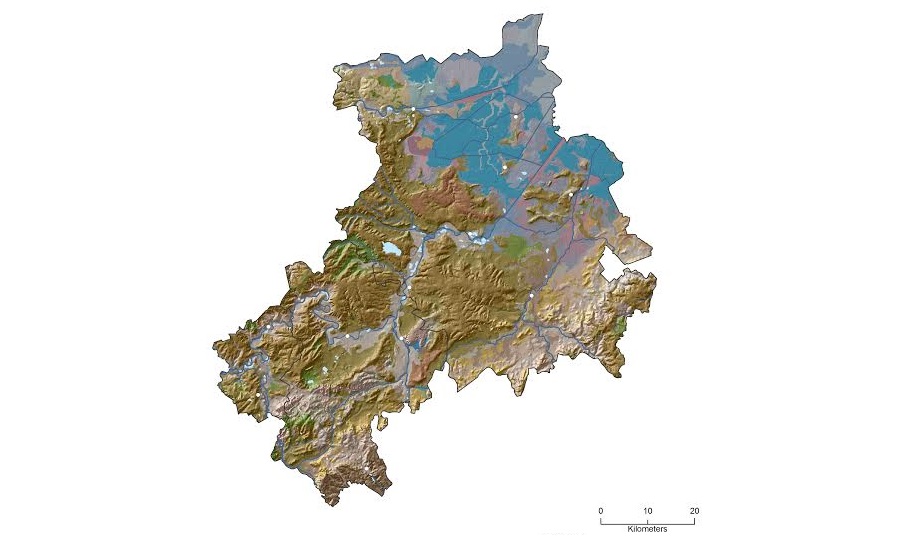
Aerial mapping company Bluesky and Cranfield University have launched an online map showing soil types across England and Wales.
The National Soil Map has been created from soil datasets produced by Cranfield University and is designed to inform decision making in a wide range of applications, from land and infrastructure management to construction, habitat assessment and agriculture.
Working with environmental data scientists at Cranfield University’s Soil and Agrifood Institute (CSAI), Bluesky can now provide the unique map that combines Cranfield’s award winning NATMAPvector soil dataset, which lists almost 300 soil associations, with the more simplified Soilscapes product.
“If you want to better manage your land, buildings, infrastructure or environment, understanding the soil is a great place to start.
“Soil is a fundamental building block for our ecosystem, and provides key support for, and threats to, our infrastructure and buildings,” commented Dr Timothy Farewell, Senior Research Fellow at the Cranfield Soil and Agrifood Institute.
“The source data for the Bluesky version of the National Soil Map is the result of more than sixty years of soil survey work and took over 200 man years to create. Our soil data is already in use by most major water companies, many consultants and government bodies.”
“This is the first time a dataset of this nature and complexity has been available to view and purchase online, and we are delighted to be working with Cranfield to ensure its wider application across a range of sectors,” added Rachel Tidmarsh, Managing Director of Bluesky.
The Bluesky National Soil Map is created from two distinct soil datasets produced by Cranfield University; NATMAPvector and Soilscapes. NATMAP Vector is the flagship soil data product from the CSAI.
It is a 1:250,000 scale map of England and Wales, showing the locations of the 297 distinct soil associations wherever they occur within the countries. Soilscapes is a 1:250,000 scale, simplified soils dataset covering England and Wales.
It was created with the purpose of effectively communicating a general understanding of the variations which occur between soil types, and how soils affect the environment.
